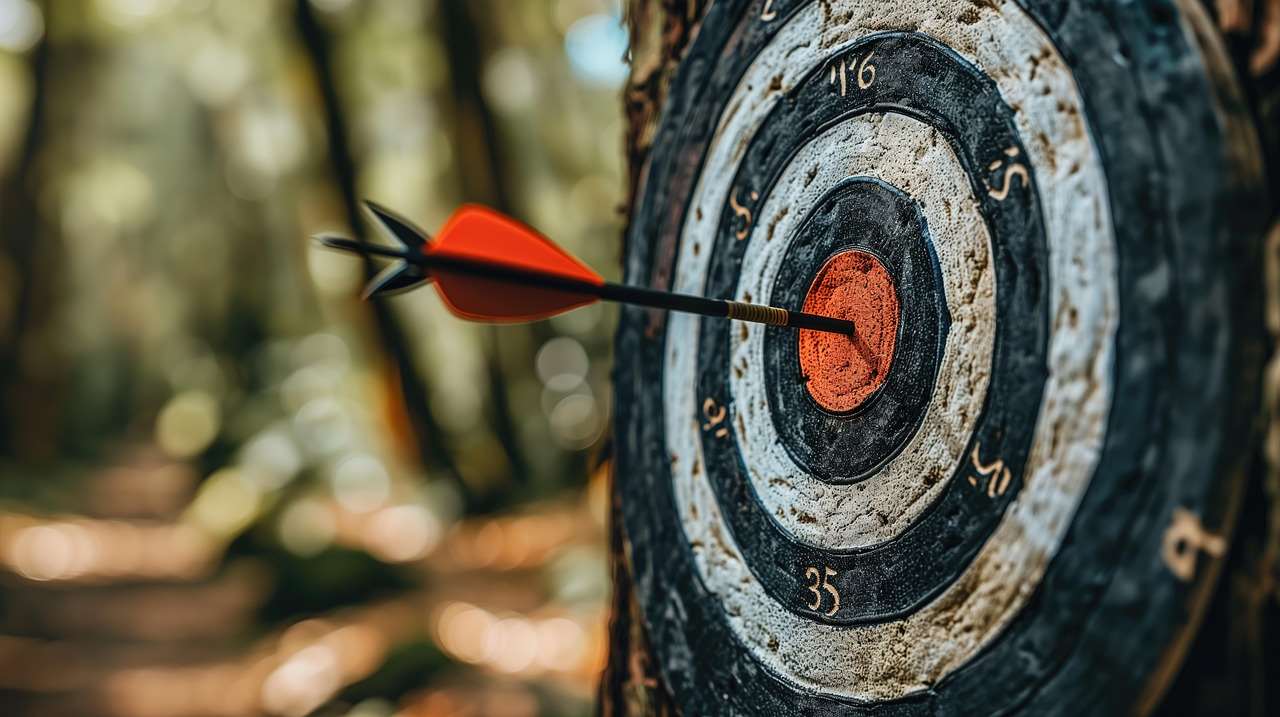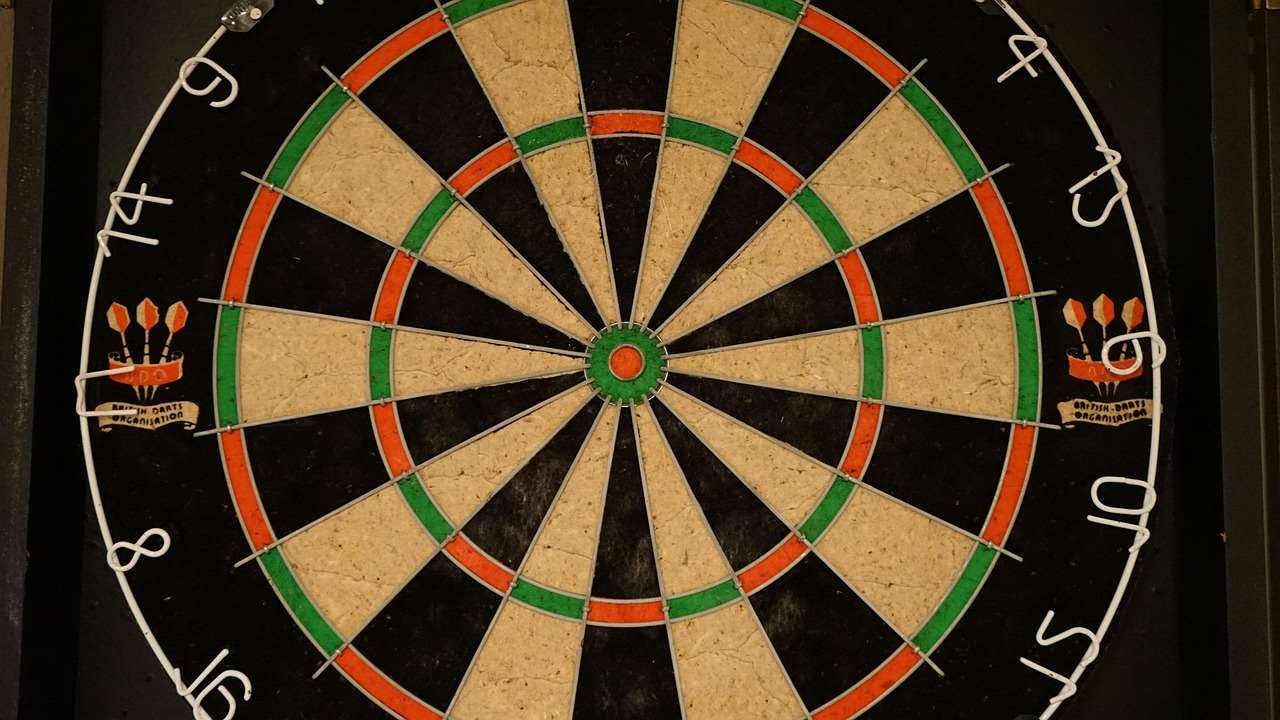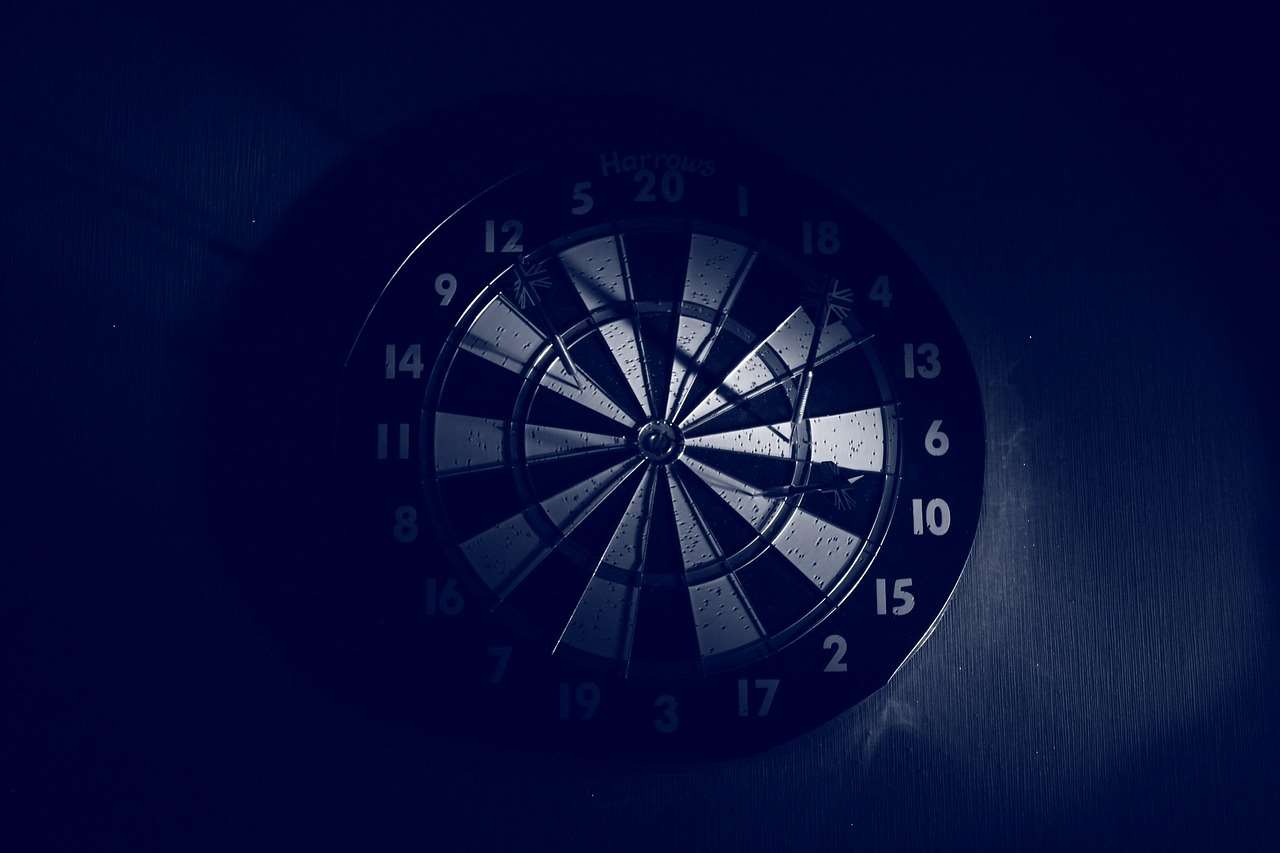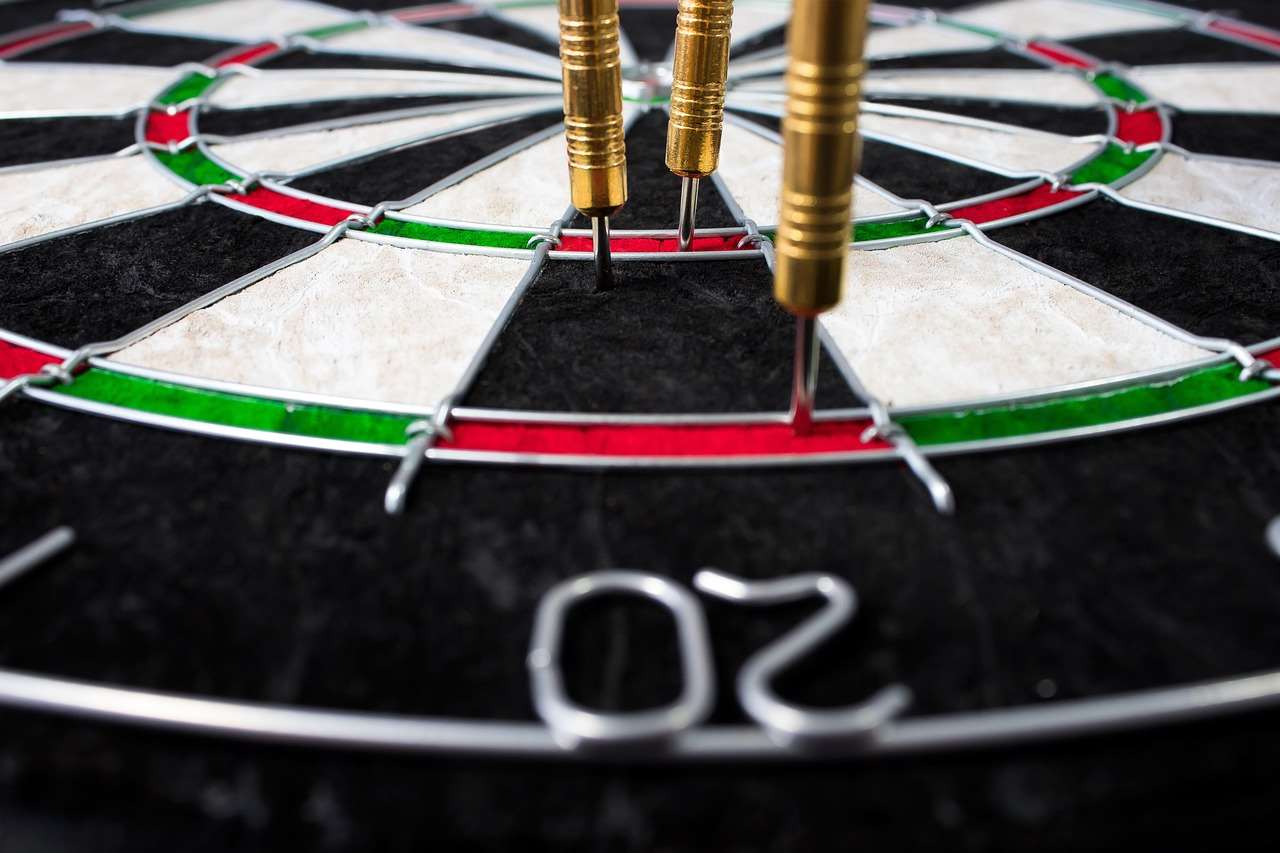Choosing the right **flight shape for front weighted darts** is crucial for achieving optimal stability and accuracy. Generally, smaller flights are preferable as they complement the dart’s natural trajectory, reducing drag and preventing fishtailing. This article will explore the best flight shapes to pair with front-loaded darts and delve into the factors that influence flight selection.
⚠️ Still Using Pen & Paper (or a Chalkboard)?! ⚠️
Step into the future! The Dart Counter App handles all the scoring, suggests checkouts, and tracks your stats automatically. It's easier than you think!
Try the Smart Dart Counter App FREE!Ready for an upgrade? Click above!
Understanding Front Weighted Darts and Flight Dynamics
Before diving into specific flight shapes, it’s important to understand what makes **front weighted darts** unique. These darts have a higher concentration of weight towards the front of the barrel, which typically results in a straighter, more direct flight path. This is because the center of gravity is closer to the point, leading to better in-flight stability. Choosing the correct flight is critical to optimizing the throw. Understanding the **relationship between dart weight, balance, and flight characteristics** is vital for any serious darts player. You can learn more about dart equipment at Choose Best Dart Equipment.
The Impact of Weight Distribution
The weight distribution of your dart significantly affects how it travels through the air. With **front weighted darts**, the forward momentum is already enhanced, making them less susceptible to wobble or deviation. This inherent stability means you don’t need large, drag-inducing flights to correct the dart’s trajectory.

The goal, therefore, is to select a flight that complements this existing stability without adding unnecessary drag. Think of it like adding a spoiler to a race car – it’s only effective if properly calibrated to the car’s weight and handling.
Optimal Flight Shapes For Front Weighted Darts
Several flight shapes are well-suited for **front weighted darts**, but some consistently outperform others. The key is to find a balance between stability and drag reduction.
- Standard Flights: While versatile, standard flights might be too large for some front-weighted darts. They can create excessive drag, potentially causing the dart to dip or fall short of the target, especially at longer distances.
- Slim Flights: These are often a great choice. Their reduced surface area minimizes drag while still providing sufficient stability. Slim flights are particularly effective for players who prefer a faster, more direct throw.
- Kite Flights: Kite flights offer a slightly larger surface area than slim flights, providing a bit more stability without significantly increasing drag. They can be a good option if you find slim flights too unstable.
- Vanes/Smaller Flights: Vanes and extremely small flights can work for experienced players with a very consistent throw. They offer minimal drag, resulting in a very fast flight, but require excellent technique to control.
Factors To Consider When Choosing A Flight Shape
The ideal **flight shape for front weighted darts** depends on several individual factors. It’s not a one-size-fits-all solution, so experimentation is key.
Throwing Style
Your throwing style is a major determinant. A player with a smooth, consistent throw might prefer smaller flights for reduced drag, while someone with a more forceful or erratic throw might benefit from slightly larger flights for increased stability. Consider whether you prefer to loop the dart or throw it in a straight line.

Dart Weight
Heavier **front weighted darts** generally require slightly larger flights than lighter ones. The increased weight generates more momentum, which can be better controlled with a bit more surface area on the flight. If you’re using heavier darts, you might find that kite flights or even some standard flights work well.
Shaft Length
Shaft length and flight shape should complement each other. Shorter shafts often pair well with smaller flights, while longer shafts might require slightly larger flights to maintain stability. Experiment with different shaft lengths in combination with various flights to find the optimal setup for your **front weighted darts**.
Personal Preference
Ultimately, the best **flight shape for front weighted darts** is the one that feels most comfortable and produces the best results for you. Don’t be afraid to try different shapes and sizes until you find what works best for your individual technique and preferences. It’s all about finding that sweet spot that improves your consistency and accuracy. You may wish to consider Best Budget Darts For Beginners while experimenting to find your optimal setup.
Experimenting With Different Flight Materials
In addition to flight shape, the material of the flight also plays a role in its performance. Common materials include:
- Polyester: Durable and inexpensive, polyester flights are a good starting point for experimentation.
- Nylon: More durable than polyester, nylon flights offer a good balance of performance and longevity.
- Mylar: Mylar flights are known for their stiffness and resistance to tearing. They can provide a more consistent flight path.
- Other Materials: Flights can be made from a variety of other materials, each with its own unique properties.

Experimenting with different materials can help you fine-tune the performance of your **front weighted darts**. So explore the differences between Difference Budget Premium Darts.
Troubleshooting Common Flight Problems
Even with the right **flight shape for front weighted darts**, you might encounter some common problems. Here’s how to troubleshoot them:
Fishtailing
If your darts are fishtailing (wobbling excessively in flight), it could indicate that your flights are too small or damaged. Try switching to a slightly larger flight shape or replacing your existing flights. Consider upgrading the Quality Comparison Budget Premium Darts.
Dipping or Falling Short
If your darts are consistently dipping or falling short of the target, it could be a sign that your flights are too large, creating excessive drag. Try switching to a smaller flight shape or adjusting your throwing technique. Shaft length can also play a crucial role here, so experiment with different lengths.
Inconsistent Grouping
If your darts are grouping inconsistently, it could be due to a variety of factors, including inconsistent throwing technique, damaged flights, or an improper flight shape for your dart. Focus on refining your throw and ensure your flights are in good condition.

Maintaining Your Flights for Optimal Performance
Proper maintenance is essential for extending the life of your flights and ensuring consistent performance. Here are some tips:
- Check for Damage: Regularly inspect your flights for tears, bends, or other damage. Replace damaged flights immediately.
- Clean Your Flights: Use a soft cloth to clean your flights regularly, removing dust, dirt, and debris.
- Store Your Darts Properly: When not in use, store your darts in a case or holder to protect the flights from damage.
Advanced Flight Customization Techniques
For serious players looking to fine-tune their dart setup even further, there are several advanced customization techniques to consider. These include:
- Flight Punching: Using a flight punch to create a perfectly round hole for the shaft can improve the consistency of the flight attachment and reduce the risk of Robin Hoods (darts landing in the shaft of another dart).
- Flight Protectors: These small metal or plastic protectors fit onto the back of the flight, preventing damage from subsequent darts.
- Flight Springs: Flight springs are small metal springs that fit inside the shaft, providing extra grip and preventing the flight from falling out.

These techniques can help you optimize the performance and longevity of your flights, giving you a competitive edge.
The Bottom Line
Selecting the right **flight shape for front weighted darts** involves considering a variety of factors, including your throwing style, dart weight, and personal preference. While smaller flights, such as slim and kite flights, are often a good starting point, experimentation is key to finding the optimal setup for your individual needs. By understanding the principles of flight dynamics and taking the time to test different options, you can significantly improve your accuracy and consistency on the dartboard.
Ready to take your dart game to the next level? Start experimenting with different flight shapes and materials today and discover the perfect combination for your **front weighted darts**. Don’t be afraid to try new things and see what works best for you. Good luck, and happy darting!
Hi, I’m Dieter, and I created Dartcounter (Dartcounterapp.com). My motivation wasn’t being a darts expert – quite the opposite! When I first started playing, I loved the game but found keeping accurate scores and tracking stats difficult and distracting.
I figured I couldn’t be the only one struggling with this. So, I decided to build a solution: an easy-to-use application that everyone, no matter their experience level, could use to manage scoring effortlessly.
My goal for Dartcounter was simple: let the app handle the numbers – the scoring, the averages, the stats, even checkout suggestions – so players could focus purely on their throw and enjoying the game. It began as a way to solve my own beginner’s problem, and I’m thrilled it has grown into a helpful tool for the wider darts community.